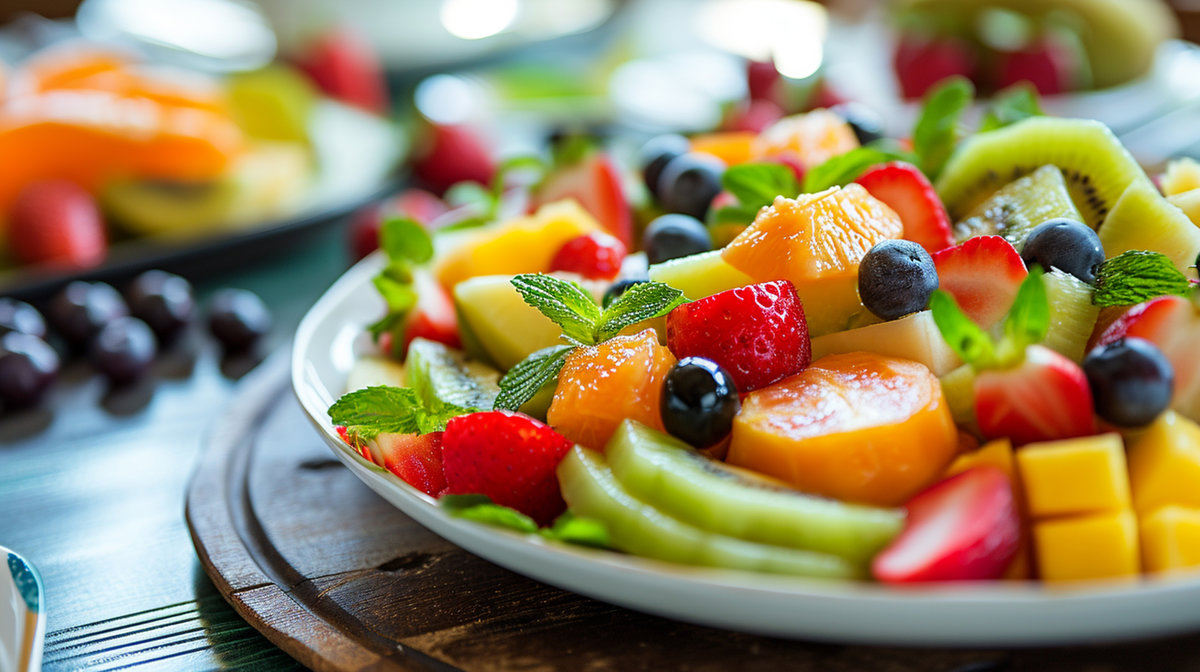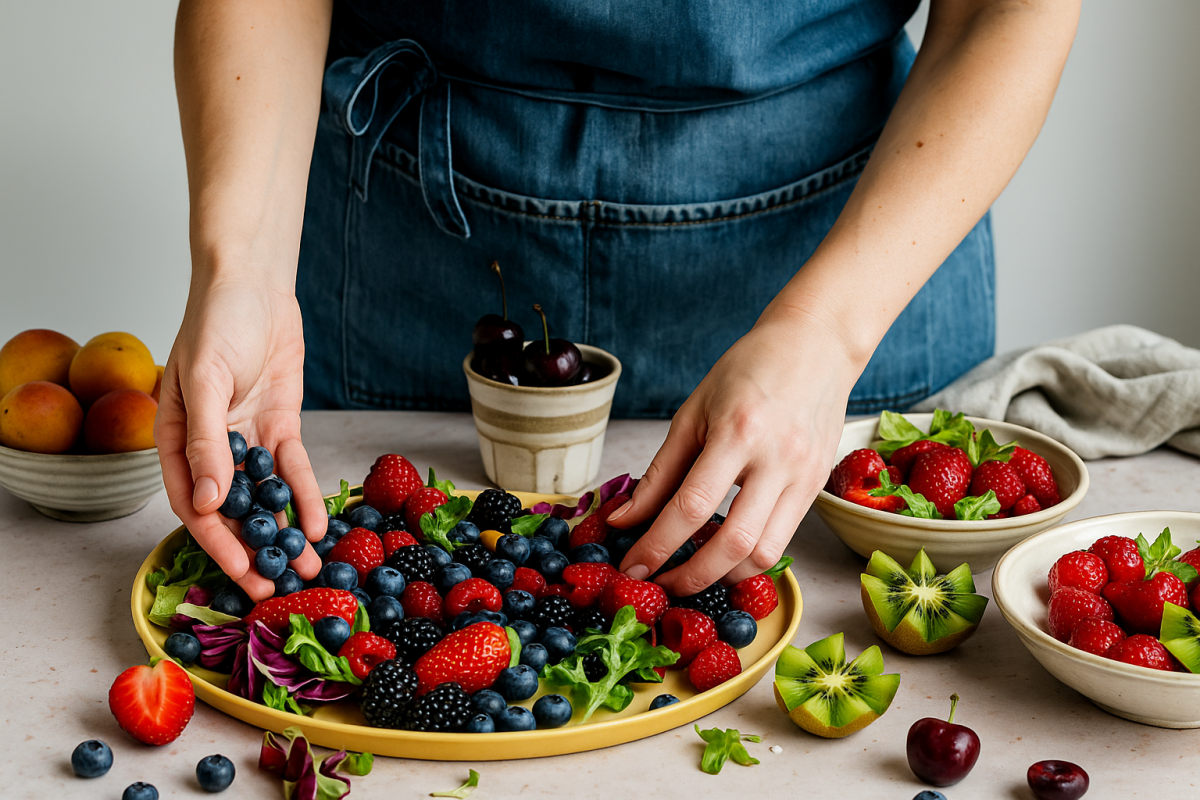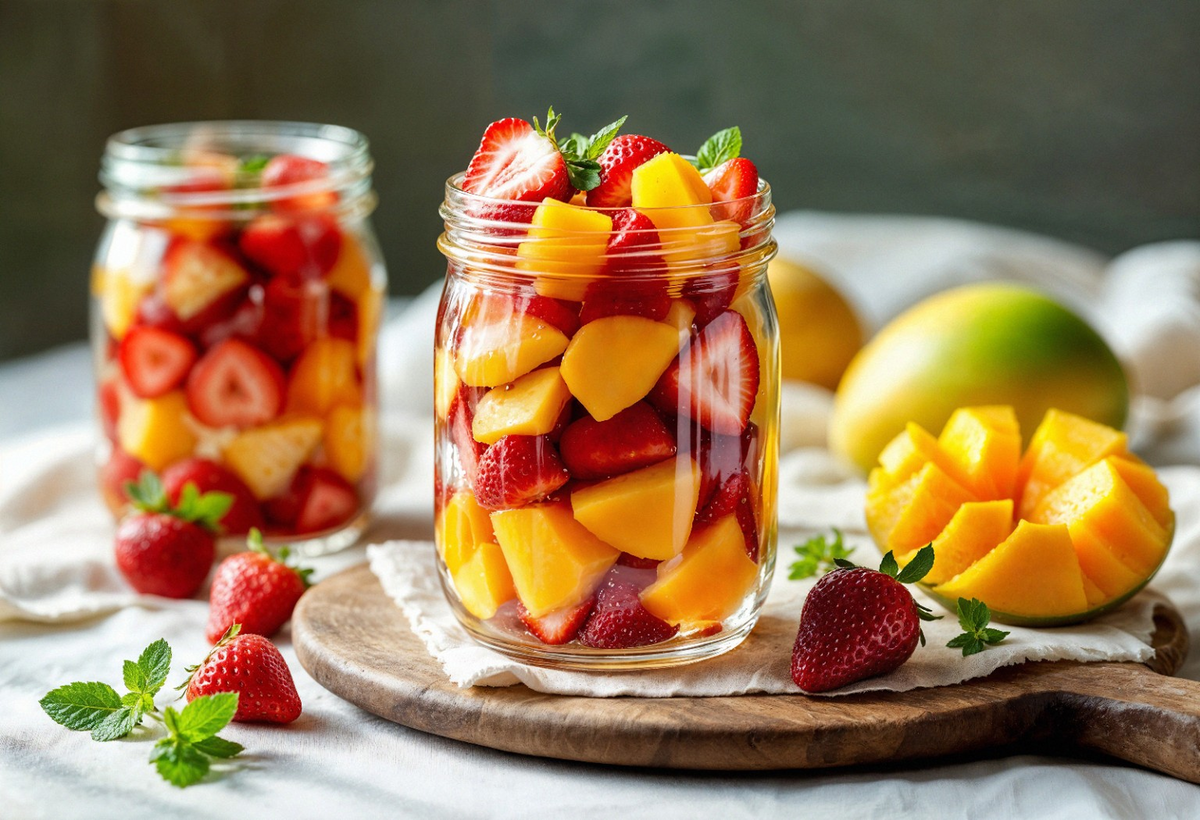A legacy of innovation, quality, and culinary experience.
Read our NewsletterDiscover the best fruits to create a colorful, delicious, and nutrient-packed fruit salad that’s perfect for any occasion or healthy snack.
A fruit salad is more than just a simple combination of fruits tossed together. It’s a celebration of nature’s variety, bursting with vibrant colors, flavors, and an array of health benefits. Whether it’s a quick snack, a party side dish, or a wholesome dessert, a well-balanced fruit salad can satisfy your taste buds and nourish your body.
In today’s health-conscious world, understanding how to craft a fruit salad that is both visually appealing and nutritionally powerful is essential. This guide will walk you through the best fruits to include, tips for creating balance and freshness, and ideas to customize your fruit salad for maximum enjoyment and health benefits.
Fruit salads are often perceived as simple, but they hold a significant role in healthy eating habits. Fresh Fruits are rich sources of essential vitamins, minerals, fiber, and antioxidants, which help in boosting immunity, improving digestion, and reducing the risk of chronic diseases. Eating a variety of fruits ensures you get a broad spectrum of nutrients.
Moreover, fruit salads offer a low-calorie, hydrating option packed with natural sugars that satisfy sweet cravings without processed sugars. Their high water content helps keep you hydrated, making fruit salads especially refreshing in warm weather or after exercise. Pairing fruit salads with a light drizzle of sugar cane vinegar can enhance the flavors by adding a subtle, tangy note, creating a balanced and delicious dish.
Incorporating a colorful mix also encourages eating a broader range of nutrients because different colors typically signify different types of phytonutrients and antioxidants. So, not only do fruit salads look good on your table, but they also contribute significantly to your overall health.

The colors in fruits come from natural compounds called phytonutrients, which provide health benefits beyond basic nutrition. Each color corresponds to a unique set of antioxidants and vitamins that support various bodily functions:
Red fruits (e.g., strawberries, watermelon, cherries) are rich in lycopene and anthocyanins, known for heart health and cancer prevention.
Orange and yellow fruits (e.g., mangoes, oranges, pineapple slices) contain beta-carotene and vitamin C, essential for eye health and immune support.
Green fruits (e.g., kiwi, green grapes) provide lutein and folate, important for vision and cell growth.
Blue and purple fruits (e.g., blueberries, blackberries) offer anthocyanins and resveratrol, linked to brain health and reducing inflammation.
White and light-colored fruits (e.g., bananas, pears) often contain compounds like flavonoids that support immune function.
By combining these colors, you naturally create a nutrient-rich salad that offers a spectrum of health benefits.

Choosing fruits that complement each other in taste, texture, and nutritional value will elevate your fruit salad. Here’s a detailed look at some of the best fruits to include:
Berries are nutritional powerhouses with a high content of antioxidants, vitamin C, and fiber. They bring vibrant reds, blues, and purples to your salad.
Strawberries are juicy and slightly tart with a beautiful red hue.
Blueberries offer a deep blue color and a burst of sweetness.
Raspberries provide a rich red color with a tangy flavor.
Blackberries add a dark purple shade and juicy texture.
Tip: Use fresh or frozen berries depending on availability. Frozen berries can also keep your salad chilled longer.
Kiwi adds a bright green color and an exotic, tangy flavor. It’s rich in vitamin C, fiber, and potassium.
Its unique texture, soft with tiny edible seeds, adds a delightful bite.
Kiwi’s tartness balances sweeter fruits, making the salad more complex and interesting.
Adding a splash of pineapple slices alongside these fruits can introduce a tropical sweetness and extra juiciness that complements the berries and kiwi perfectly, enhancing both taste and texture. Additionally, including a small amount of sweet relish on the side can provide a surprising tangy contrast that elevates the overall flavor experience of your fruit salad.
Mangoes offer a golden-orange color and tropical sweetness.
High in vitamin A and C, mangoes also provide folate and fiber.
Their juicy, soft flesh complements firmer fruits and balances acidity.
Pineapple adds a sunny yellow color and a sweet-tart punch.
It contains bromelain, an enzyme that aids digestion and reduces inflammation.
Its tropical flavor lifts the overall profile of the salad.
Citrus segments are easy to eat and bring a bright orange color.
Oranges and mandarins are excellent vitamin C sources and contain fiber.
Their juiciness adds moisture to the salad without needing additional dressings.
Choose seedless grapes in red, green, or black varieties.
Grapes contribute sweetness and a burst of juiciness.
They contain antioxidants like resveratrol, which are beneficial for heart health.
To add a subtle zing and complexity, a drizzle of sugar cane vinegar can brighten the flavors and balance the sweetness of the fruits beautifully.
Apples bring a crisp texture and subtle sweetness or tartness, depending on the variety.
Rich in fiber and vitamin C, apples help add crunch to your salad.
Use varieties like Fuji or Gala for sweetness, or Granny Smith for tartness.
Pro tip: Toss apples with lemon juice immediately after cutting to prevent browning.
Bananas offer a creamy texture and natural sweetness.
They provide potassium, vitamin B6, and carbohydrates for energy.
Bananas work well when sliced just before serving to avoid mushiness.
Pomegranate seeds add jewel-like red color and a crunchy texture.
Rich in antioxidants, vitamin C, and fiber, these seeds add a pleasant tartness.
They also make your salad look more festive and appealing.
Melons are hydrating and sweet with beautiful shades of pink, orange, and green.
Watermelon adds a juicy, refreshing bite and is high in lycopene.
Cantaloupe offers orange flesh rich in beta-carotene.
Honeydew contributes a pale green sweetness with vitamins C and B6.
To enhance the texture and flavor, sprinkle some finely chopped jalapeno slices for a mild kick that contrasts with the sweetness of the fruits. Alternatively, a small dollop of creamy mayonnaise can be mixed into the salad to add richness and a smooth finish.
A well-rounded fruit salad balances sweetness, tartness, crunch, and softness. This keeps every bite interesting and satisfying.
Mangoes, grapes, bananas, and melons bring natural sweetness. These fruits satisfy sugar cravings without processed sugars and pair wonderfully with a light drizzle of sugar cane vinegar to enhance their flavors.
Citrus fruits like oranges and mandarins, as well as kiwi and pineapple, add tanginess. This contrast balances the sweet flavors and keeps the palate refreshed, especially when complemented by a hint of jalapeno slices for a subtle kick.
Apples, pomegranate seeds, and grapes provide a satisfying crunch. Crunchy elements contrast well with softer fruits and add texture variety, much like the crisp texture found in grape leaves when finely chopped and added as a unique twist.
Berries, bananas, and mangoes add smooth, tender textures. These fruits create a pleasing mouthfeel and complement the crunchy pieces.
Tip: Cut all fruits into similar bite-sized pieces for uniformity. This makes the salad easier to eat and look more attractive.

Fruit salads can quickly lose their freshness, color, and texture if not handled properly. Here are some helpful strategies:
Fruits like apples, pears, and bananas brown quickly after being cut. Toss these fruits with a little lemon or lime juice immediately to slow oxidation and keep their bright appearance. Adding a splash of vegetables shortening can also help seal in freshness while giving a subtle sheen.
Fresh mint or basil can add a refreshing aroma and subtle flavor without overpowering the fruit. This can make your salad feel more gourmet and interesting.
Serve the fruit salad cold, either by chilling the fruit before mixing or refrigerating the salad for an hour before serving. This keeps the fruits crisp and enhances their refreshing quality.
Over-mixing can crush delicate fruits like berries and bananas, turning your salad mushy. Gently fold the fruit with a large spoon or spatula to maintain texture.
For the best flavor and texture, prepare your fruit salad as close to serving time as possible. This reduces the chance of fruit juices mixing too much and making the salad soggy.
Fruit salad is incredibly versatile and can be adapted to different tastes, seasons, and occasions.
Combine mango, pineapple, kiwi, and papaya for a taste of the tropics. Add a sprinkle of shredded coconut or a splash of coconut water for extra tropical flair.
A mix of strawberries, blueberries, raspberries, and blackberries makes a fiber-rich, antioxidant-packed salad that’s naturally sweet and slightly tart.
Include apples, grapes, bananas, oranges, and berries for a familiar, family-friendly fruit salad that everyone enjoys.
Add pomegranate seeds, star fruit slices, and dragon fruit chunks to make your fruit salad look and taste exotic. This version is great for holiday gatherings or special occasions.
While fruit salads are delicious on their own, sometimes a light dressing or topping can enhance flavors.
A small amount of honey or agave syrup can add sweetness and a glossy finish.
Grated lemon, lime, or orange zest adds fragrance and a subtle tang that brightens the flavors.
For a creamy texture, mix in plain Greek yogurt or coconut cream. This not only adds richness but also provides protein and probiotics (in yogurt), similar to how creamy mayonnaise can add smoothness when lightly incorporated.
Adding chopped nuts like almonds or walnuts and seeds like chia or flax adds crunch, healthy fats, and extra nutrients.
Fruit salad is naturally adaptable to various dietary preferences and restrictions:
Vegan and vegetarian: Fruit salads are 100% plant-based and nutrient-dense, often enhanced with fresh stuffed grape leaves for a unique texture and flavor twist.
Gluten-free: Fresh fruits are naturally gluten-free, making this a safe option for those with celiac disease or gluten intolerance.
Low-calorie: Most fruits are low in calories but high in fiber and water, ideal for weight management.
Diabetes-friendly: Focus on lower glycemic fruits like berries, apples, and citrus, and avoid added sugars to keep blood sugar stable.
Crafting the best fruit salad is about more than just throwing together whatever fruits you have on hand. It’s a mindful process of choosing colorful, nutrient-dense fruits that complement each other in flavor, texture, and health benefits. From antioxidant-rich berries to tropical mangoes and refreshing melons, the right combination will deliver a feast for the eyes and the body. Remember to balance sweet and tart flavors, crunchy and soft textures, and keep your salad fresh with simple tips like using citrus juice and gentle mixing.
Whether you enjoy fruit salad as a daily snack, a side dish at a gathering, or a healthy dessert, understanding the best fruits to use and how to keep your salad vibrant will ensure you always serve a delicious, nutritious treat. Experiment with seasonal and exotic fruits, add natural dressings, and tailor your salad to your dietary needs to keep it exciting and beneficial.
Enjoy your colorful, nutritious fruit salad, a simple way to add freshness, flavor, and wellness to your life!